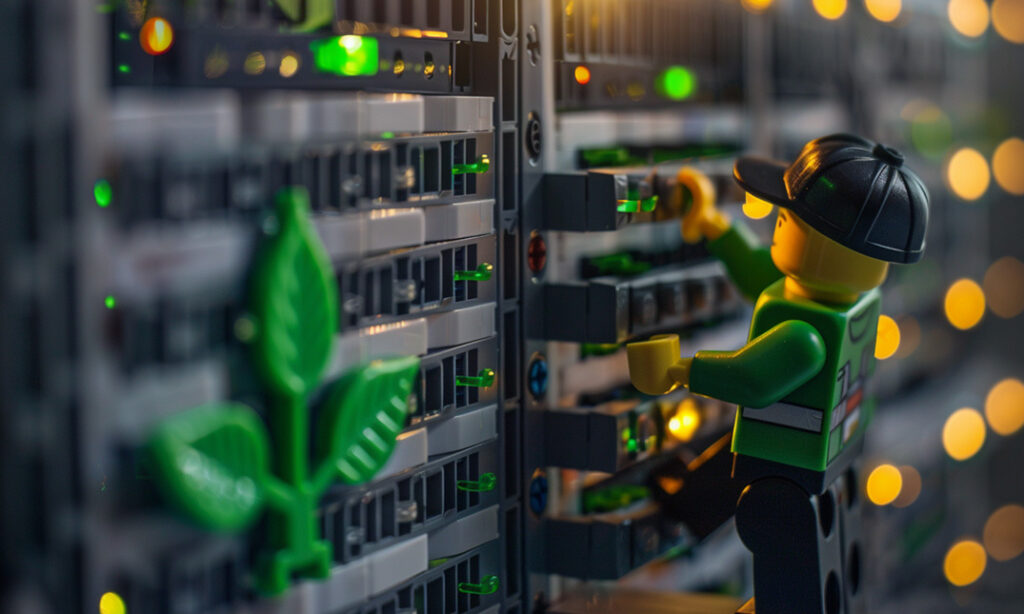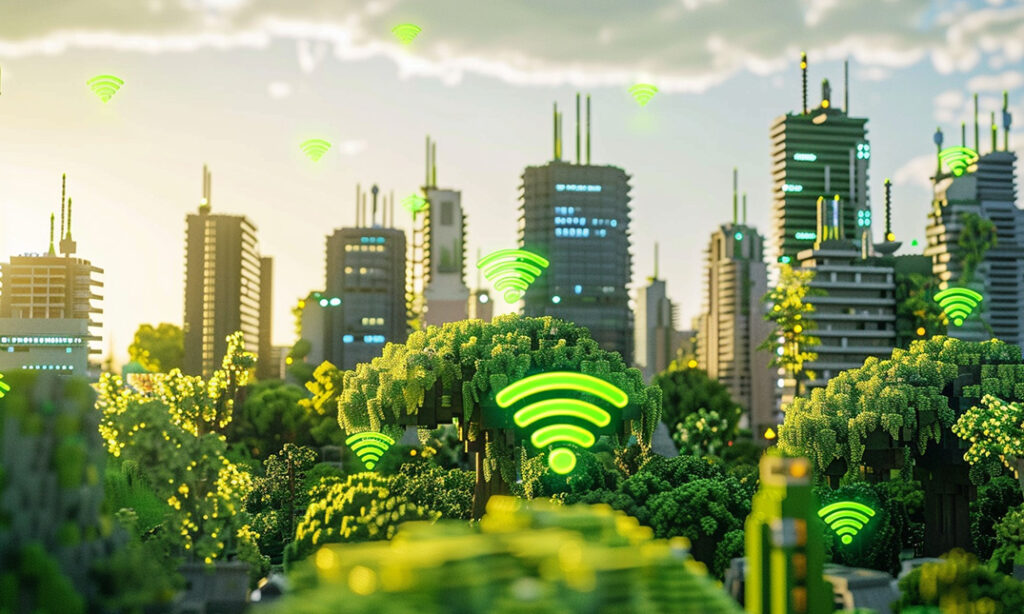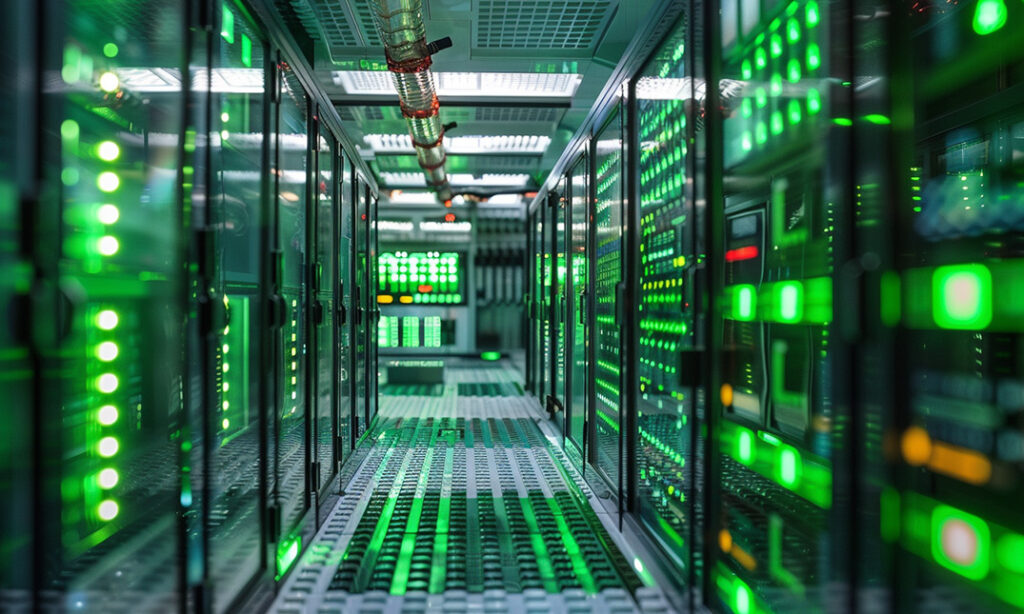Sustainability has become a critical concern in the modern world as we face increasing environmental challenges such as climate change, resource depletion, and pollution. Governments, organisations, and individuals are increasingly aware of the need to adopt sustainable practices to protect our planet for future generations. This global shift towards sustainability is not just a trend but a necessary evolution in how we approach everything from energy consumption to waste management.
What is Sustainable IT?

Sustainable IT, also known as Green IT, refers to the design, manufacturing, use, and disposal of information technology in a way that reduces its environmental impact. This involves a holistic approach to managing IT systems and processes to minimise energy consumption, reduce waste, and promote recycling and reuse of materials. Sustainable IT encompasses various strategies, including the use of energy-efficient hardware, virtualisation, cloud computing, and software that optimises energy use.
How Important is Sustainable IT?
The IT industry plays a vital role in both contributing to and addressing environmental issues.
Data centres consume vast amounts of energy, and the production of electronic devices often involves hazardous materials and significant resource extraction.
Sustainable IT practices are crucial for mitigating these impacts, reducing the carbon footprint of IT operations, and promoting a circular economy where resources are reused and recycled.
Adopting Sustainable IT can lead to cost savings, improve corporate social responsibility, and enhance an organisation’s reputation. As businesses and individuals become more environmentally conscious, the demand for Sustainable IT solutions continues to grow, making it an essential component of modern technological and business strategies.
What Are The Goals of Green IT?
Green IT is the practice of designing, deploying, and managing information technology in a way that minimises environmental impact. This includes everything from the initial design and manufacture of IT equipment to its usage, maintenance, and eventual disposal. Sustainable IT aims to reduce energy consumption, lower carbon emissions, and decrease electronic waste. The scope of Sustainable IT extends to all aspects of the IT lifecycle, including the efficiency of data centres, the environmental footprint of hardware, the development of energy-efficient software, and the implementation of sustainable IT policies and practices within organisations.
The key goals of Sustainable IT are centred around reducing environmental impact and promoting resource efficiency. These goals include:
- Energy Efficiency: Optimising the energy consumption of IT systems and devices to reduce the overall carbon footprint.
- Resource Efficiency: Using materials efficiently during the manufacturing and operational phases to minimise waste and maximise the lifecycle of IT products.
- Waste Reduction: Implementing practices to reduce electronic waste through recycling, refurbishing, and responsible disposal of IT equipment.
- Sustainable Procurement: Choosing IT products and services that meet environmental standards and have a lower environmental impact.
- Green Data Centres: Designing and managing data centres to be energy-efficient and environmentally friendly, often through the use of renewable energy sources and advanced cooling technologies.
The goals of Sustainable IT are to create a more sustainable and responsible IT ecosystem that supports environmental sustainability, reduces operational costs, and aligns with broader corporate social responsibility goals.
The Environmental Impact of Traditional IT Practices
Traditional IT practices have a significant environmental impact, contributing to various environmental issues. Some of the key impacts include:
- High Energy Consumption: Data centres and IT infrastructure are major consumers of electricity, often relying on non-renewable energy sources that contribute to greenhouse gas emissions.
- Electronic Waste: The rapid obsolescence of IT equipment leads to large amounts of electronic waste, much of which contains hazardous materials that can harm the environment and human health if not properly disposed of.
- Resource Depletion: The production of IT hardware requires significant amounts of raw materials, including rare metals and minerals, leading to resource depletion and environmental degradation.
- Pollution: The manufacturing and disposal of IT products can result in the release of toxic substances into the environment, contributing to air and water pollution.
Addressing these impacts through Sustainable IT practices is essential for creating a more sustainable future, where technology can continue to advance without compromising environmental stability.
The Benefits of Sustainable IT

Environmental Benefits
Sustainable IT practices offer numerous environmental benefits that contribute to the overall health of the environment:
- Reduced Carbon Footprint: By implementing energy-efficient technologies and practices, Sustainable IT significantly lowers the carbon emissions associated with IT operations. This includes using renewable energy sources for data centres and optimising energy use in hardware and software.
- Less Electronic Waste: Sustainable IT encourages the recycling, refurbishing, and responsible disposal of electronic devices, reducing the volume of electronic waste. This helps mitigate the environmental hazards posed by discarded IT equipment, such as soil and water contamination from hazardous materials.
- Resource Conservation: Through the use of sustainable materials and practices, the demand for raw materials is reduced. This leads to less environmental degradation and resource depletion, preserving natural ecosystems and biodiversity.
Economic Benefits
Adopting Sustainable IT can lead to significant economic advantages for organisations:
- Cost Savings: Energy-efficient IT systems and practices reduce electricity consumption, leading to lower utility bills. Additionally, prolonging the lifecycle of IT equipment through maintenance and refurbishment can decrease the need for frequent replacements, resulting in further cost savings.
- Energy Efficiency: Implementing energy-efficient technologies, such as virtualisation and cloud computing, optimises resource usage and reduces operational costs. This not only benefits the environment but also enhances the financial performance of businesses.
- Operational Efficiency: Sustainable IT practices often lead to streamlined operations and improved performance of IT systems. Efficient resource management and reduced waste contribute to more effective and productive IT infrastructure.
Social Benefits
Sustainable IT also offers several social benefits that positively impact organisations and their stakeholders:
- Improved Corporate Social Responsibility (CSR): Adopting Sustainable IT practices demonstrates a company’s commitment to environmental stewardship and social responsibility. This enhances the company’s reputation and aligns with the growing consumer demand for environmentally responsible businesses.
- Enhanced Brand Image: Companies that prioritise sustainability can strengthen their brand image and appeal to environmentally conscious consumers and investors. This can lead to increased customer loyalty, market differentiation, and competitive advantage.
- Employee Satisfaction and Retention: Organisations that implement Sustainable IT practices often experience higher levels of employee satisfaction and retention. Employees are increasingly valuing workplaces that are committed to sustainability and ethical practices, leading to a more motivated and engaged workforce.
The Core Technologies within Sustainable IT
Energy-Efficient Data Centres
Data centres are the backbone of modern IT infrastructure, but they are also significant energy consumers. Sustainable IT focuses on making data centres more energy-efficient through various strategies:
- Advanced Cooling Techniques: Using technologies such as liquid cooling, free cooling, and airside economisers to reduce the energy required for cooling data centres.
- Renewable Energy Sources: Powering data centres with renewable energy sources like solar, wind, or hydroelectric power to reduce reliance on fossil fuels.
- Energy Management Systems: Implementing systems to monitor and manage energy use in real-time, optimising power consumption and identifying areas for improvement.
Sustainable Hardware
- Recyclable Materials: Manufacturing IT devices using materials that can be easily recycled or are biodegradable, reducing electronic waste.
- Energy-Efficient Devices: Prioritising the use of hardware that consumes less power, such as Energy Star-certified products and devices with low-power modes.
- Modular Designs: Creating hardware with modular designs that allow for easy upgrades and repairs, extending the lifespan of the equipment and reducing waste.
Green Software
- Low-Energy Algorithms: Developing algorithms that require less computational power and energy, reducing the overall energy consumption of software applications.
- Efficient Coding Practices: Writing code that is optimised for performance and energy efficiency, minimising the resources required to execute software functions.
- Sustainable Software Development: Integrating sustainability considerations into the software development lifecycle, from design to deployment, to ensure that software solutions contribute to energy efficiency.
Cloud Computing and Virtualisation
- Virtualisation: Implementing virtualisation technologies to consolidate multiple virtual machines on a single physical server, reducing the number of physical servers required and lowering energy use.
- Cloud Services: Leveraging cloud services to optimise resource allocation and scalability, enabling businesses to use only the resources they need and reduce idle computing power.
- Energy-Efficient Data Centres: Many cloud providers operate highly efficient data centres, offering sustainable IT solutions that are more energy-efficient than traditional on-premises data centres.
How To Implement Sustainable and Green IT

Implementing Sustainable IT involves adopting a range of best practices that collectively reduce environmental impact and enhance operational efficiency.
Energy Audits
One of the first steps is conducting energy audits and assessments. These audits help organisations identify areas where energy consumption can be reduced, providing a clear picture of current usage and highlighting opportunities for improvement. Regular assessments ensure that energy-saving measures are effective and help track progress over time.
Green Procurement
Adopting green procurement policies is another crucial practice. This involves sourcing IT products and services that meet specific environmental criteria, such as energy efficiency certifications, recyclable materials, and minimal hazardous substances. By prioritising vendors and products with strong sustainability credentials, organisations can significantly reduce their environmental footprint.
Remote Working
Promoting remote work is also an effective strategy for Sustainable IT. Allowing employees to work from home reduces the need for commuting, leading to lower greenhouse gas emissions and decreased energy use in office buildings. This practice not only benefits the environment but can also improve employee satisfaction and productivity.
Virtualisation
Implementing server virtualisation and consolidation is a key technical strategy for sustainable IT. Virtualisation allows multiple virtual servers to run on a single physical server, optimising resource utilisation and reducing the number of physical servers needed. This leads to substantial energy savings and lowers cooling requirements in data centres. Consolidation further enhances these benefits by streamlining IT infrastructure, making it more efficient and less resource-intensive.
Energy Efficient Devices
Encouraging the use of energy-efficient devices and peripherals is essential for reducing the overall energy consumption of IT operations. Organisations should prioritise the purchase and deployment of devices that are designed to consume less power without compromising performance. This includes everything from computers and monitors to printers and networking equipment. By choosing energy-efficient products, businesses can significantly cut their energy costs and contribute to environmental sustainability.
Sustainable IT Challenges
Implementing Sustainable IT comes with its share of challenges, but with strategic planning and the right solutions, these obstacles can be effectively managed.
Common Obstacles to Implementing Sustainable IT
- Initial Costs: Investing in energy-efficient technologies, upgrading infrastructure, and adopting sustainable practices often require significant upfront expenditure. This financial barrier can be daunting for many organisations, particularly small and medium-sized enterprises.
- Lack of Awareness: There is often a lack of awareness about the long-term benefits and cost savings associated with Sustainable IT. Without a clear understanding of these advantages, organisations may be reluctant to make the necessary investments.
Potential Solutions and Strategies
To overcome these challenges, organisations can adopt several potential solutions and strategies:
- Cost-Benefit Analysis: Conduct a thorough cost-benefit analysis to demonstrate the long-term financial savings and return on investment from Sustainable IT initiatives. Highlighting the reduced operational costs, energy savings, and potential for government incentives can help justify the initial expenditure.
- Phased Implementation: Implement Sustainable IT practices gradually, starting with low-cost, high-impact changes such as energy-efficient lighting and promoting telecommuting. This phased approach allows organisations to spread out costs and realise benefits incrementally, making the transition more manageable.
- Education and Awareness Campaigns: Provide training and resources on the benefits of Sustainable IT and how to implement it. By educating employees, they can become advocates for sustainability, driving cultural change and encouraging broader adoption of sustainable practices.
The Role of Government and Policy
Government and policy play a critical role in promoting Sustainable IT. Governments can incentivise sustainable practices through:
- Grants, Tax Breaks, and Subsidies: Offering financial incentives for businesses that invest in energy-efficient technologies and renewable energy sources.
- Regulations and Standards: Establishing and enforcing regulations that mandate certain sustainability standards, driving widespread adoption of Sustainable IT practices.
- Public Sector Leadership: Setting an example for private companies by demonstrating the feasibility and benefits of adopting greener technologies.






